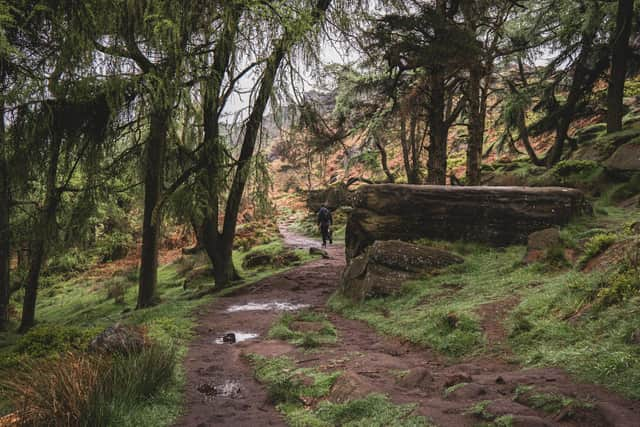'Large number' of trees at popular Peak District beauty spot set to be felled
and live on Freeview channel 276
A large number of larch trees in the Back Forest, at the Roaches in the Peak District will be felled soon. This comes after a disease, called Phytophthora ramorum, has been found to progress 'very quickly' in the area.
The Woodland Trust defines Phytophthora ramorum as a fungal-like organism, closely related to algae, that causes the death of a wide range of trees and shrubs. The name literally means ’the plant-destroyer’ and they have been responsible for some of the worst plant disease epidemics in history.
Advertisement
Hide AdAdvertisement
Hide AdThe work in the Back Forest is set to start this winter with some pathways closed for safety reasons while the trees are being felled. There will be a break for bird breeding season before the works resume next winter.


Jon Rowe, Land Management Team Manager for North, said: “Sadly, we must fell a large number of larch trees in Back Forest after Forestry England detected the disease here. Some of the trees are close to footpaths, so we will need to close sections off while the work takes place.
"To prevent the disease spreading to other areas of larch nearby we are legally required to fell the infected larch trees and those within 200 metres of infected trees. Thankfully, Back Forest has lots of other native trees too, which aren’t at risk, so much of the woodland will not be affected."The Trust will work with the Forestry Commission to draw up a restoration plan for the area.
Jon added: “As well as monitoring the natural regeneration of broadleaf trees, over the coming years we’ll plant native hardwoods, species such as oak, hazel and birch. The areas of larch plantation are some of the darkest areas of the woodland.
Advertisement
Hide Ad"By allowing more light in, we will see native broadleaf trees setting seed naturally in these areas. The open areas created by the felling will also aid woodland birds such as pied flycatcher and wood warbler, bringing in more wildlife as well as making the woodland more natural.”